Tartu is a classical city of Northern Europe with its architectural traditions and interesting history, an important cultural center of Estonia. Since the 17th century, there has been one of the oldest universities in the region, which in the 20th century was considered one of the best higher educational institutions in the USSR, and today continues to maintain high standards of European education.
Urban architecture is represented by Gothic, classical style and modernism. The monumental ruins of the once grandiose Cathedral of Saints Peter and Paul, the town hall, the medieval Jaanov Church, the vast complex of university buildings - this is just an incomplete list of attractions that every visitor to Tartu should see.
What to see and where to go in Tartu?
The most interesting and beautiful places for walking. Photos and a short description.
- Town Hall Square and City Hall
- Fountain Kissing Students
- Ruins of the Dome Cathedral
- Science Center AHHAA
- University of Tartu
- Tartu observatory
- Old anatomicum
- Theater Vanemuine
- Falling house
- Estonian National Museum
- Tartu Toy Museum
- KGB Chambers Museum
- Tartu Beer Museum A Le Coq
- Ice Age Center
- Estonian Aviation Museum
- Compound of St. Anthony
- Yaanovskaya Church
- Tartu St. Peter's Church
- Assumption Cathedral
- Sculpture Father and Son
- Sculpture Bronze Pig
- Angel Bridge Inglisild
- Devil's bridge Kuradisild
- Botanical Garden of the University of Tartu
- Alatskivi Castle
Town Hall Square and City Hall
Town Hall Square is the center of the historical part of Tartu. This place is popular with tourists and locals alike. The architectural appearance of the square has changed several times. In the second half of the 18th century, it was built up with classical mansions. Tartu Town Hall was built in 1786. Not only city authorities sat in the building. The first floor housed a prison and a shelter for the poor. Today, in their place is an information center for tourists.
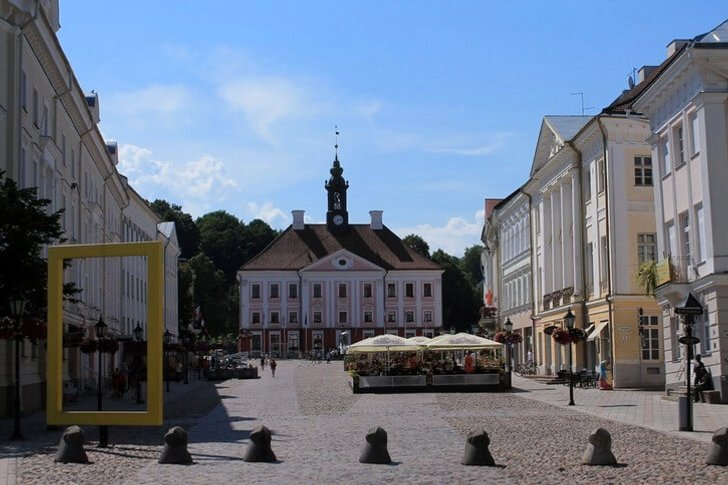
Address: Town Hall Square and City Hall, Tartu, Estonia
Phone: +372 738 3000
Opening hours: Open 24 hours.
Fountain "Kissing Students"
The fountain is located in the center of the Town Hall Square. It was installed in the late 1990s. The sculptural composition depicts a young girl and a young man merging in a passionate kiss. The figures of young people are full of happiness, lightness and expression. They seem to be ready to share their love with everyone. Tartu is a city of students, so the original fountain immediately fell in love with the local youth.
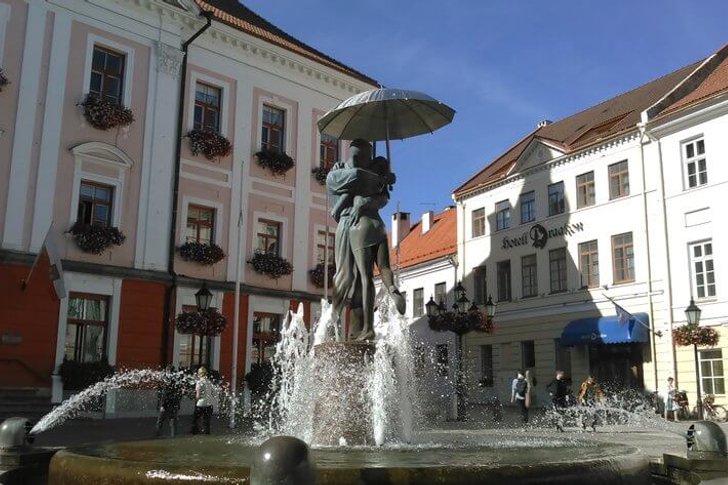
Address: Fountain Kissing Students, Tartu, Estonia
Opening hours: 24/7
Ruins of the Dome Cathedral
The Tartu Dome Cathedral was built on the ruins of a pagan fortress in the 13th century. In the 16th century it was destroyed during the Livonian War. Recovery plans were not destined to materialize, as a series of endless wars took too many resources from the country. In the 19th century, the library of Dorpat University was erected on the ruins, and the surviving tower of the cathedral was turned into a water tower.
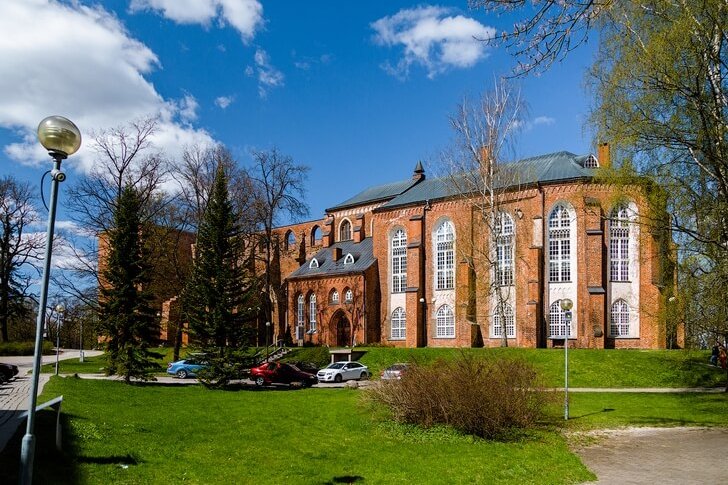
Address: Ruins of the Dome Cathedral, Tartu, Estonia
Phone: +372 744 4444
Opening hours: Open daily 10:00 - 18:00
Science Center AHHAA
The largest research and education center in the Baltics, operating since 1997. Since 2011, its head office has been located in Tartu. The complex includes a planetarium, a science theater and exhibition pavilions. The center hosts exhibitions and lectures; it actively cooperates with leading educational institutions. The AHHAA building was built in the style of modern architecture using innovative construction technologies.
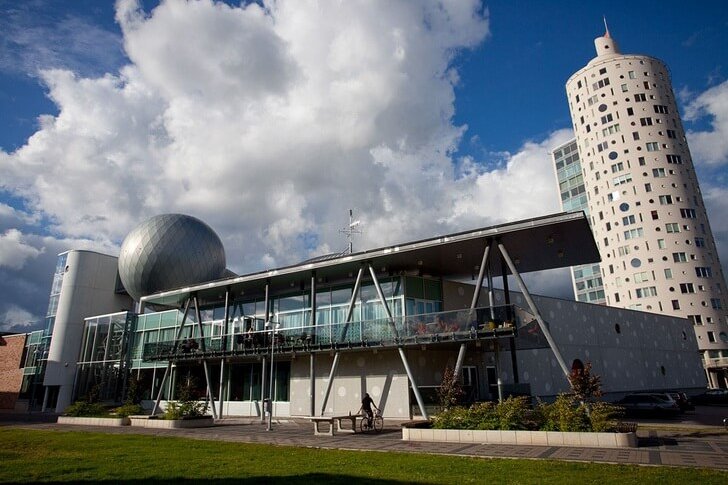
Address: Science Center AHHAA, Tartu, Estonia
Phone: +372 744 0050
Opening hours: Tue-Sun 10:00-19:00, Mon Closed
University of Tartu
The university was founded in the 17th century by the Swedish monarch Gustav II Adolf. After the lands of Estonia (Estland) fell under the rule of the Russian Empire in the 18th century, the educational institution ceased to exist. In 1802, Derpt University was opened on its basis, which became the prototype of the modern University of Tartu. At various times, many famous scientists were educated here.
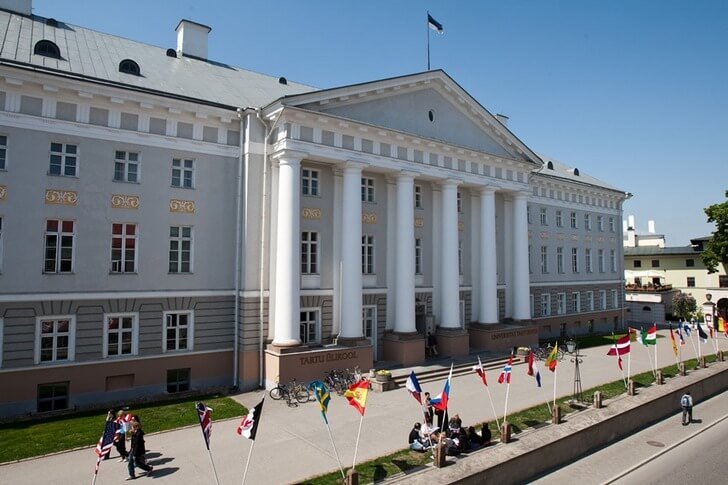
Address: University of Tartu, Tartu, Estonia
Phone: +372 737 5000
Opening hours: Monday to Friday: 08:00 - 18:00; Saturday: 10:00 - 15:00; Sunday: Closed
Tartu observatory
The observatory was built within the territory of the Toomemägi park in 1808 on the site of the former bishop's castle. The architect J. V. Krause worked on the project. The appearance of the observatories located in Uppsala and Göttingen was taken as the basis. The building was reconstructed in 1825. Many important scientific discoveries were made here. In 1818-1839 the scientist Friedrich Struve worked at the observatory. Today the building is open not only for scientific research, but also for excursions.
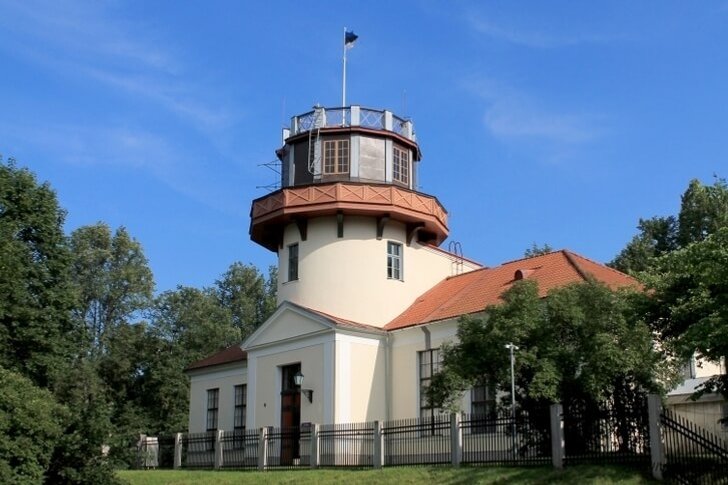
Address: Tartu observatory, Tartu, Estonia
Phone: +372 737 5400
Opening hours: Tuesday to Saturday: 10:00 - 17:00; Sunday: 12:00 - 17:00; Monday: Closed.
Old anatomicum
Anatomikum in Tartu is a place where doctors and scientists in the field of medicine and pharmacology worked. The building was erected at the beginning of the 19th century according to the project of J. V. Krause. It is a mansion in a laconic classical style, decorated with columns and balconies. In 1901 - 1918, N. N. Burdenko, a famous Russian (later Soviet) surgeon and founder of Soviet neurosurgery, worked at the anatomy.

Address: Old anatomicum, Tartu, Estonia
Opening hours: Tue-Sun 10:00-18:00, Mon Closed
Theater Vanemuine
The theater stage was founded in 1865 on the initiative of the Estonian poet and leader of the national movement JV Jansen. Vanemuine is famous for the fact that performances in Estonian were staged here for the first time. The historic building burned down in 1944. Until 1967, when a new building called the "big house" was built, the troupe was located in the former Deutsches Theater. Today, the latter is a branch of Vanemuine and is called the "little house".
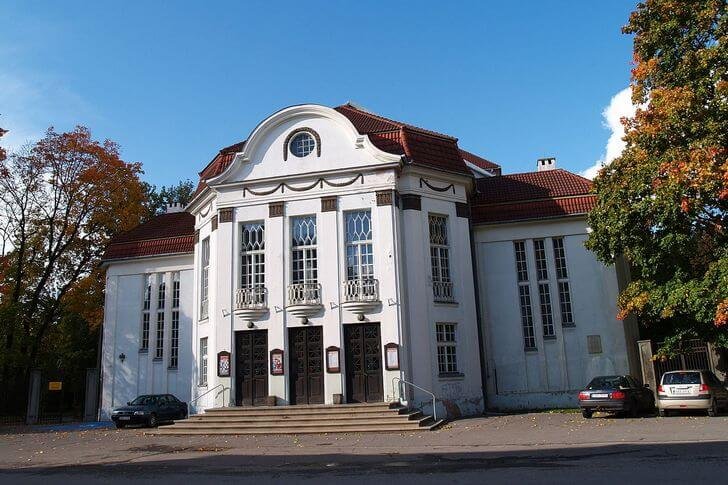
Address: Theater Vanemuine, Tartu, Estonia
Phone: +372 744 4444
Opening hours: Tue-Sat 11:00-18:00; Sun-Mon Closed
falling house
The building was built at the end of the 18th century for the Barclay de Tolly family. Due to miscalculations made during the design, the house began to tilt towards the surface over time, but thanks to the reconstruction, this “fall” was stopped. Since 1940, a branch of the Tartu Art Museum has been located here. The house hosts temporary exhibitions and educational lectures. There is also a bookstore with literature on art.
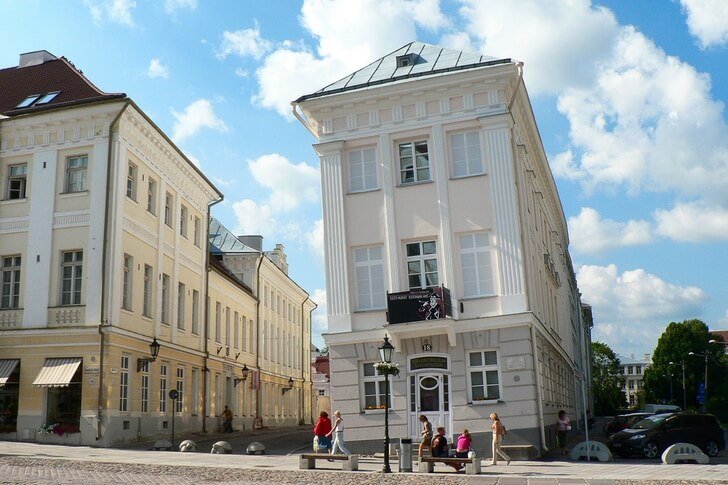
Address: Falling house, Tartu, Estonia
Opening hours: Mon-Fri: 10:00-20:00; Sat-Sun: 12:00-18:00
Estonian National Museum
The new museum building opened in 2016. The solemn event was attended by delegations from neighboring Poland, Latvia and Lithuania, as well as the Minister of Culture of Estonia. The building is located in the Raadi area. It is made in the traditions of modern architecture using actual forms and materials. In addition to exhibition spaces, there is a cinema hall, a theater and a spacious conference hall.
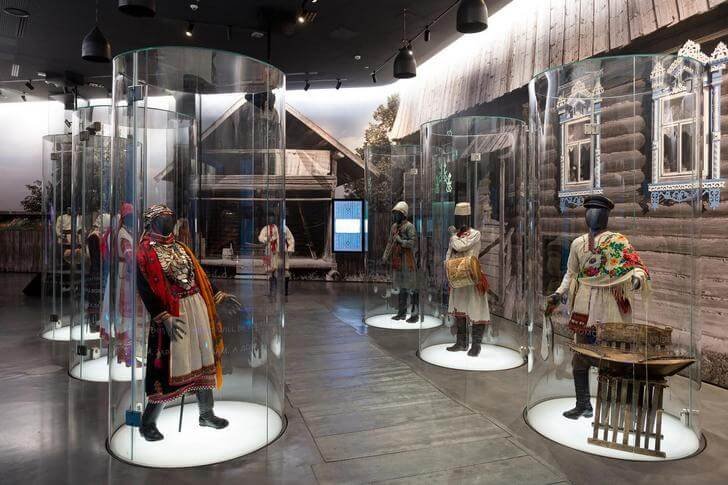
Address: Estonian National Museum, Tartu, Estonia
Phone: +372 736 3000
Opening hours: Tue-Sun 10:00-18:00, Mon closed
Tartu Toy Museum
The exposition was founded in 1994 on the initiative of the city authorities. The museum is located in the building of the former craft school of the Dorpat district. Thanks to careful restoration in 2002-2003, the building regained its historical appearance. The collection consists of several thousand exhibits. Mainly Estonian-style toys and crafts of the Finno-Ugric tribes are presented here. Exhibits from other countries are also exhibited.
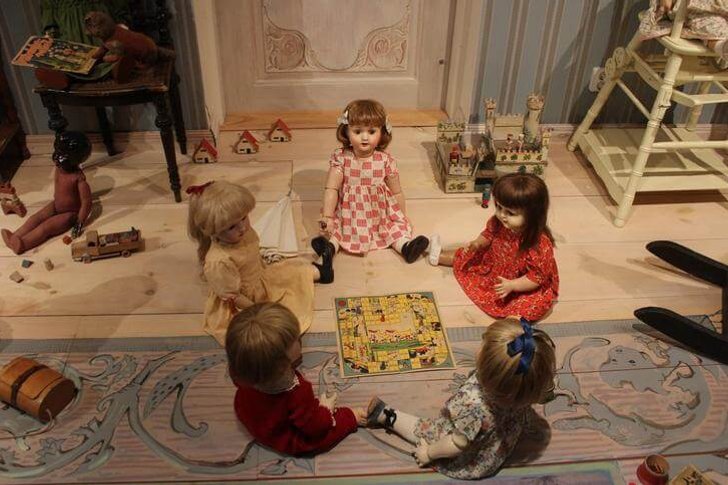
Address: Tartu Toy Museum, Tartu, Estonia
Phone: +372 736 1189
Opening hours: Tue-Sun 10:00-18:00
KGB Chambers Museum
Practically in all former member countries of the Warsaw Pact, as well as in the republics of the USSR, there are museums dedicated to the Soviet period. As a rule, this time is presented in a negative light and is even referred to as the “Soviet occupation”. Tartu also has a similar exposition. In the Museum of KGB Chambers, visitors will see documents, photographs, posters, letters and other evidence of the activities of the "regime", and will also be able to learn about the history of the "Forest Brothers" national liberation movement.
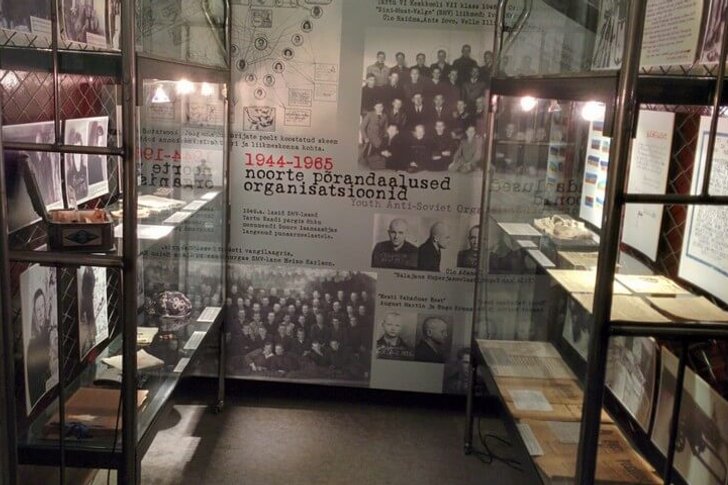
Address: KGB Chambers Museum, Tartu, Estonia
Phone: +372 736 1136
Opening hours: Tue-Sun 10:00-18:00; Mon closed
Tartu Beer Museum A Le Coq
It is believed that it was in Tartu that the traditions of Estonian brewing were born. The local factory A Le Coq was founded in 1803. Today it is one of the largest beer producers in the country. Since 2003, a museum has been operating at the enterprise. It is a fairly impressive exposition, located on six floors. The collection consists of vintage equipment, crockery and awards won by the factory in prestigious competitions. After the tour, visitors taste the beer.
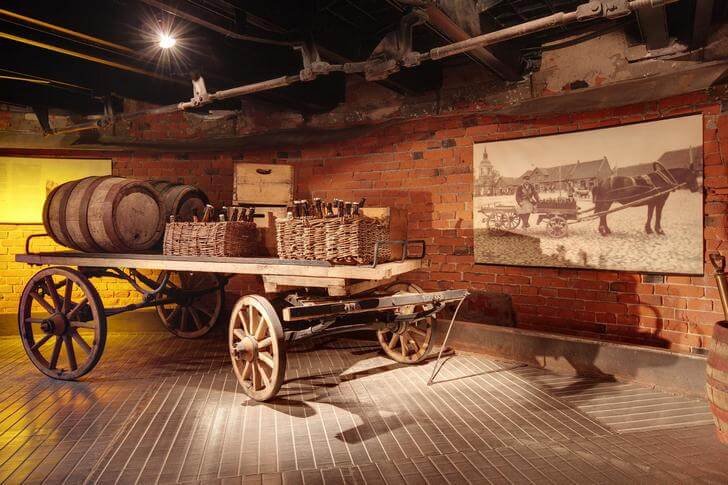
Address: Tartu Beer Museum A Le Coq, Tartu, Estonia
Phone: +372 731 3600
Opening hours: Mon-Sun 11:00-22:00
Ice Age Center
Museum of Natural History, located near Tartu. It opened in 2012. The place was not chosen by chance, since it is in the vicinity of the village of Eksi that traces of the ice age are still preserved. The museum exposition tells about the development of the flora and fauna of our planet. Here the visitor can see models of long-extinct animals, play educational games and watch interesting films.
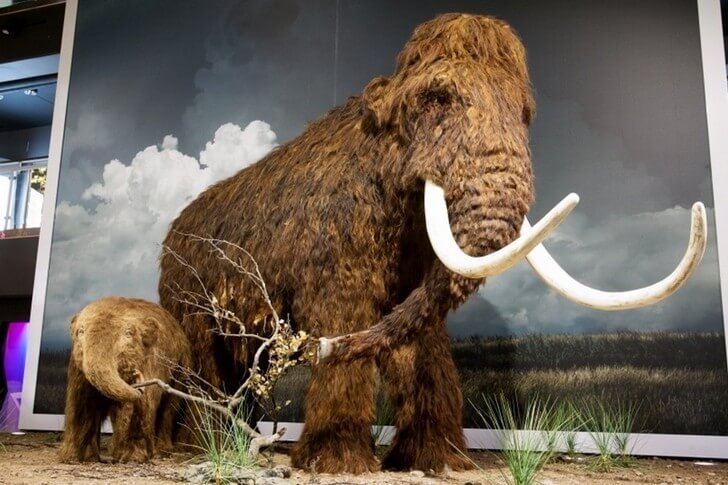
Address: Ice Age Center, Tartu, Estonia
Opening hours: Tue-Sun 10:00-18:00
Estonian Aviation Museum
A grand exhibition of aircraft is located a few kilometers from the city. It consists of almost 400 models of airplanes and helicopters, most of which were produced in the European Union. There are also a couple of Soviet models. The Estonian Flying Days show is regularly held on the territory of the complex, where you can watch skydivers jumping, paragliding flights and drone maneuvers.
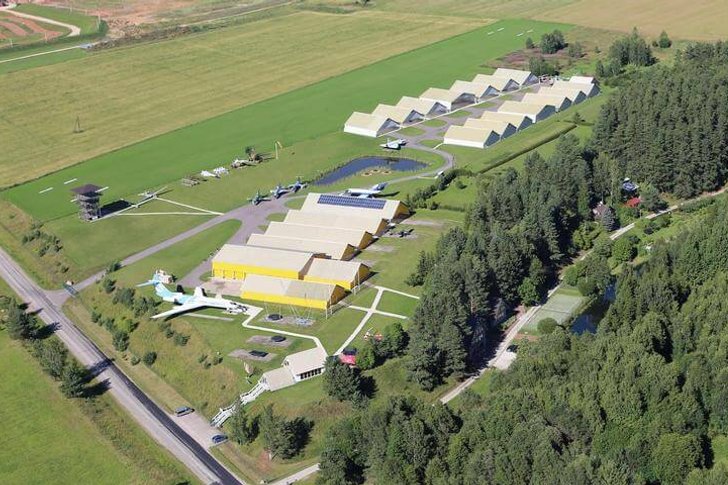
Address: Estonian Aviation Museum, Tartu, Estonia
Phone: +372 736 1130
Opening hours: 10:00 - 18:00
Compound of St. Anthony
Craft farmstead, which consists of workshops, residential buildings and the administrative building of the guild. This association was first mentioned in the 15th century. The purpose of the activities of the members of the organization is to preserve and develop traditional Estonian crafts. Local craftsmen make pottery, sew costumes, toys, and also make products from leather, glass, porcelain and other materials. Thematic events are often held in the courtyard.
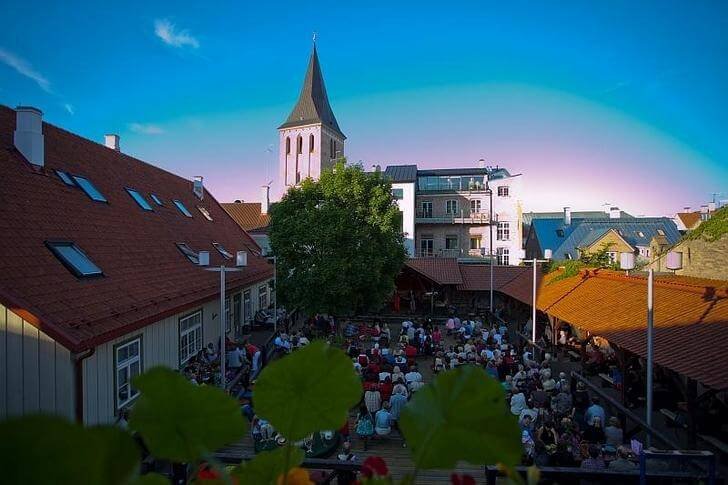
Address: Compound of St. Anthony, Tartu, Estonia
Opening hours: Mon-Sun: 10:00-18:00
Yaanovskaya Church
The stone temple was built in the 14th century. According to some sources, the wooden church and the parish existed from the 12th-13th centuries. During the Northern War, the building was badly damaged. During the Second World War, as a result of the bombing, the church burned down. The temple was restored from 1989 to 2005. The historic building was distinguished by rich decoration, which, unfortunately, has not survived to this day.
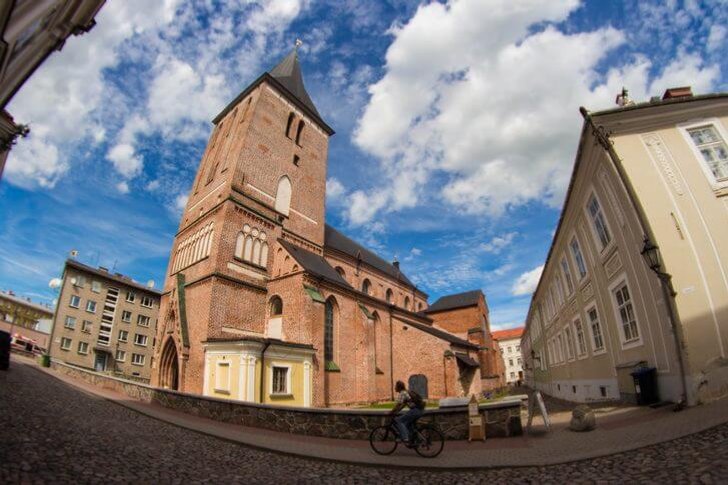
Address: Yaanovskaya Church, Tartu, Estonia
Opening hours: Mon-Sun: 09:00 - 18:00
Tartu St. Peter's Church
The temple was erected at the beginning of the 20th century in pseudo-Gothic (neo-Gothic) style. It is a majestic red brick building with a tall spire. The vast hall is designed for 3 thousand people. The interior is decorated with a 19th century organ. The attraction is located away from the main tourist routes, but thanks to the high tower it is quite easy to see from the city center.
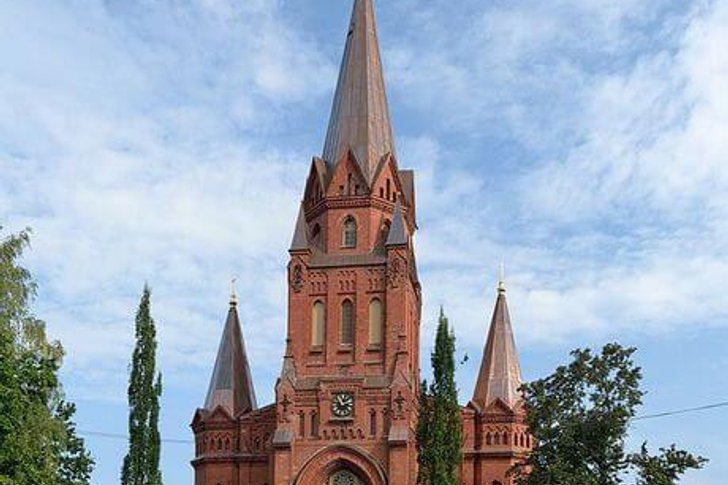
Address: Tartu St. Peter, Tartu, Estonia
Phone: +372 732 1280
Opening hours: 10:00 - 18:00
Assumption Cathedral
The Orthodox Cathedral of Tartu, which was erected on the site of a former Dominican monastery. The first church was built here in 1754 according to the project of P. Shpekle, but after 20 years it burned down. The temple of the middle of the 19th century, which was designed according to the classical Byzantine tradition, has survived to this day. The Assumption Cathedral was the center of Orthodoxy in Tartu. It was visited by many famous parishioners, including the poets V.A. Zhukovsky and I. V. Lotarev, known as Igor Severyanin.

Address: Assumption Cathedral, Tartu, Estonia
Phone: +372 733 4545
Opening hours: 10:00 - 18:00
Sculpture "Father and Son"
The sculpture was created by the master Yulo Yun in 1977. Since at that time such creations (nudity) were not welcomed, the statue adorned the city only in 2004. The composition depicts the sculptor himself, who holds the hand of a one and a half year old child. Both figures are the same size, which symbolizes the equality of rights for adults and children. The statue is located on the sidewalk along Kuyni Street.

Address: Sculpture Father and Son, Tartu, Estonia
Opening hours: 24/7
Sculpture "Bronze Pig"
The original city monument in the form of a cheerful pig. It is installed next to the city market and is actually a clear illustration of how to butcher a pork carcass. All parts of the pig's body are numbered and labeled. Because of this meaning, the sculpture makes an ambiguous impression. On the one hand - a carefree animal, on the other - just food.
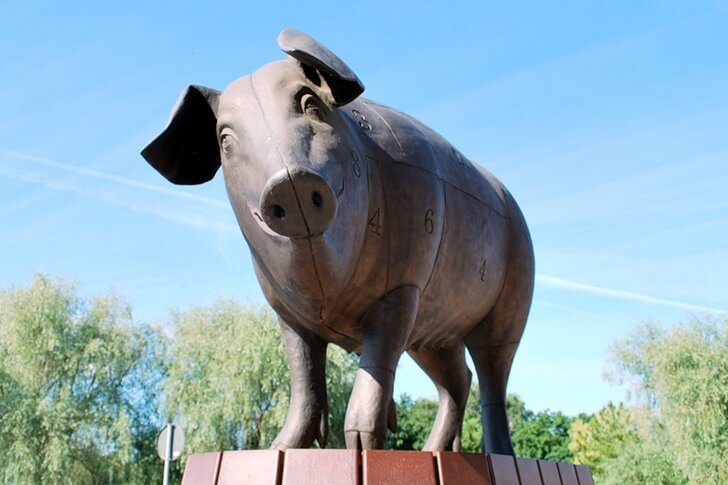
Address: Sculpture Bronze Pig, Tartu, Estonia
Opening hours: 24/7
Angel Bridge "Inglisild"
The bridge is located on the Toomemägi hill in the park of the same name. Popular tourist routes pass through this place. The construction was erected at the end of the 19th century according to the project of J. V. Krause. This architect is the author of many historical monuments of Tartu. The main decoration of the bridge is the bas-relief of the University of Tartu, which says in Latin "Rest restores strength."
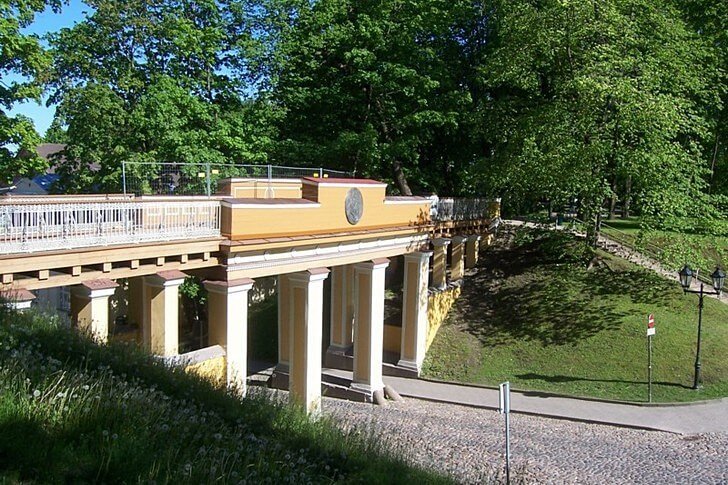
Address: Angel Bridge Inglisild, Tartu, Estonia
Opening hours: 00:00 - 24:00
Devil's bridge "Kuradisild"
At the beginning of the 19th century, a wooden structure was located on the site of the modern bridge. In 1913, it was replaced by a concrete structure designed by A. Eichhorn. The bridge was built in honor of the 300th anniversary of the Romanov dynasty. It is dedicated to Emperor Alexander I. The origin of the name "Devil's Bridge" is not known for certain. Perhaps it was given as a contrast to the angelic bridge "Inglisild".
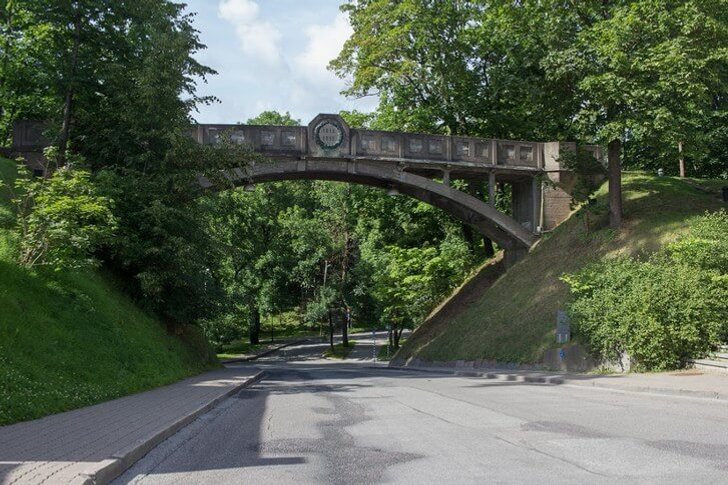
Address: Devil, Tartu, Estonia
Opening hours: Daily: 24 hours
Botanical Garden of the University of Tartu
The Botanical Garden was founded over 200 years ago for research purposes. Today it has become one of the favorite vacation spots of the townspeople. In total, several thousand plants grow in the garden. Some exotic species can only exist in the artificial climate of greenhouses. The local palm trees are the oldest in all of Northern Europe, so they are treated with the utmost care.
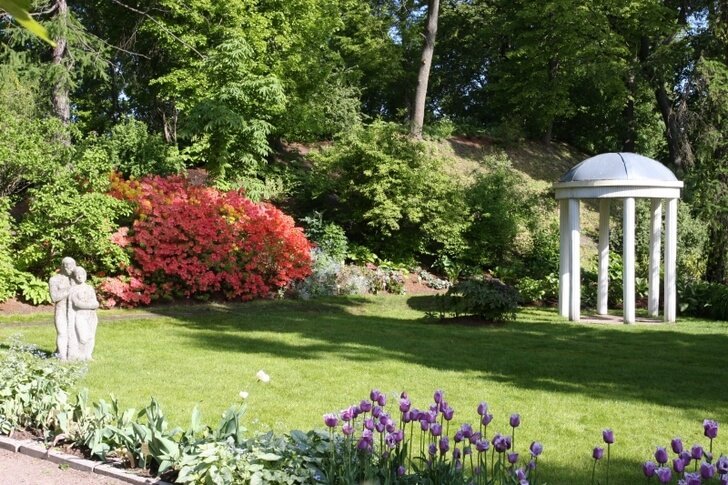
Address: Botanical Garden of the University of Tartu, Tartu, Estonia
Phone: +372 737 6000
Opening hours: Daily: 10:00 - 20:00
Alatskivi Castle
The building was erected in the 16th century on the shore of the lake of the same name. Initially, it was built in the Gothic style, but as a result of numerous reconstructions, it acquired baroque features. The last major renovation took place in 2005-2011. Several rooms on the ground floor are occupied by a museum dedicated to the composer E. Tubin. The rest of the territory is given over to conference rooms, a restaurant and a hotel.
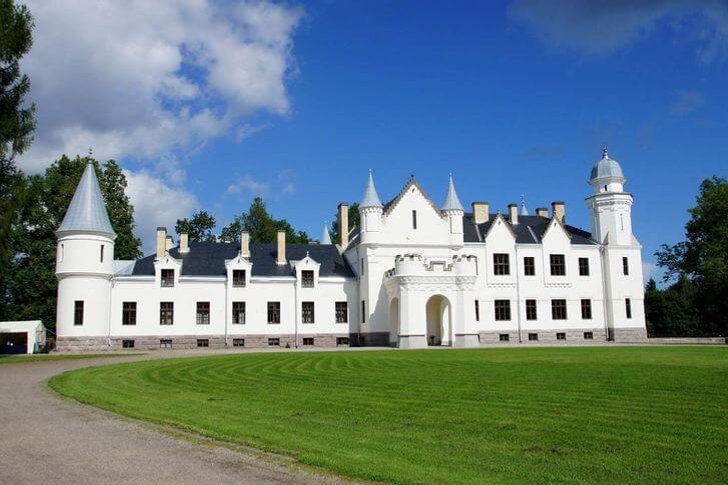
Address: Alatskivi Castle, Tartu, Estonia
Phone: +372 744 1800
Opening hours: 10:00 - 18:00
